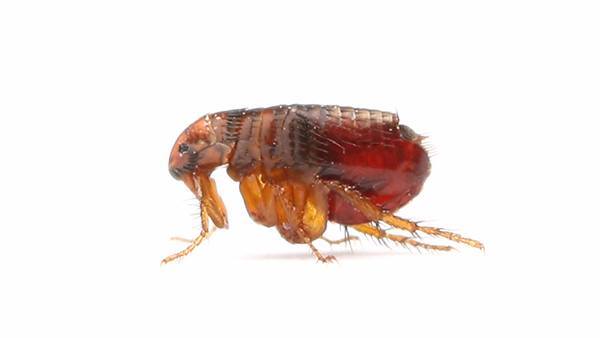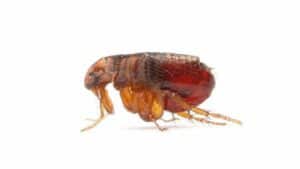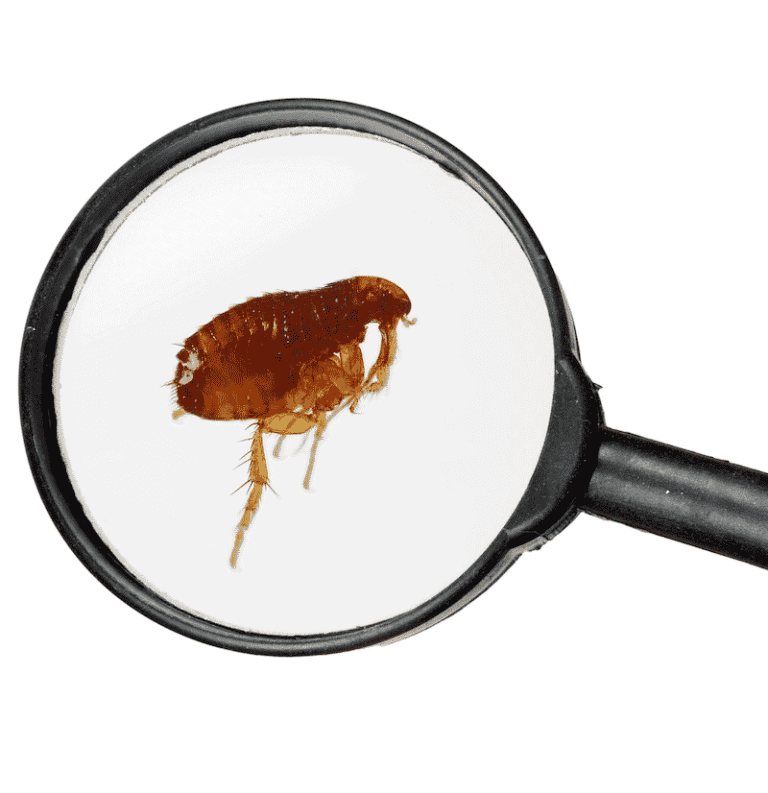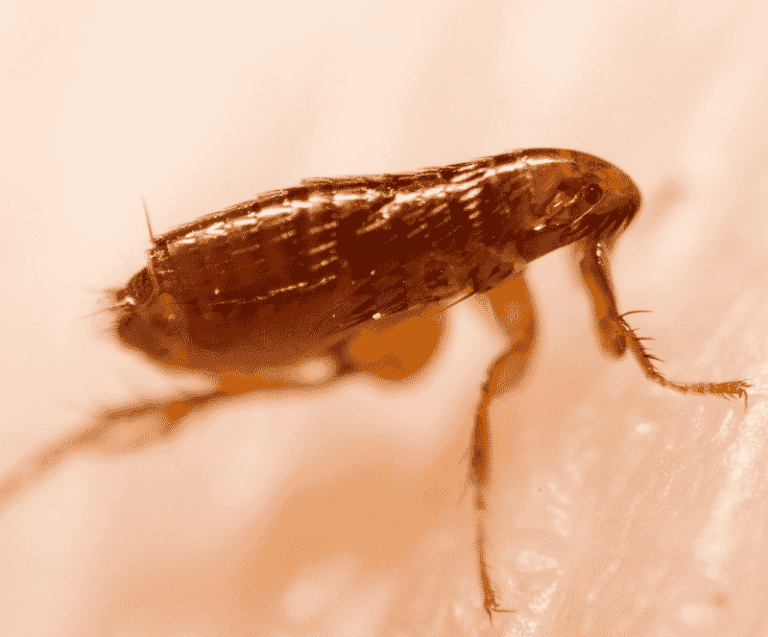
Fleas
Fleas are annoying and rather disgusting from the human point of view. For your beloved pets, they are torturous. Fleas are prolific breeders that can go from a pair to a serious infestation in a matter of days. The resilient nature of their eggs makes them a tough pest to eliminate and the chances of a recurrence are high.
How to Identify Fleas
Fleas are small, only about 1/16 of an inch long at full maturity with an incredible jumping ability. They have hardened bodies that are flattened from side to side with six long legs. Their bodies are reddish brown to blackish brown with mouthparts specifically designed to feed on the blood of a host, most often a mammal but fleas aren’t that choosy about their meals. They are big enough to see with the naked eye but small enough to easily overlook. Their fecal waste looks like grains of black pepper in your pets’ fur; this may be your first sign in their bedding or brushes.
Do Fleas Cause Problems?
Fleas slice the skin of their host, inject a anti-clotting substance and siphon off the blood as it leaves the host. The bites cause small, itchy, red bumps. They can cause your pet to scratch to the point of drawing blood or removing fur, give your pet dermatitis or anemia, spread tapeworms and disease to both pets and humans. They breed extremely quickly and in huge numbers.
Seasonality
“Flea season” is usually from the end of spring to the beginning of winter but in warm areas it can be year-round. Fleas can hibernate for up to two years if no host presents itself. They spin a protective cocoon and even inside it they can sense the vibrations and carbon dioxide production of a potential host. However, with a climate controlled environment and animals or people for hosts, they will not choose to become dormant.





